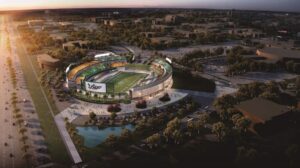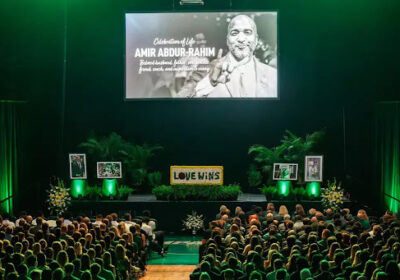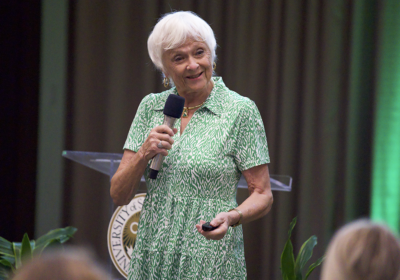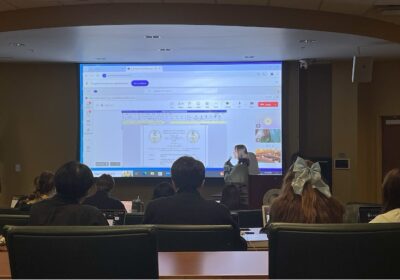New year, old plans: USF’s aspirations to build on-campus stadium over the years

The idea of an on-campus stadium is not news for USF, but after five years in the dark, discussions to start planning for the project were brought back to the spotlight.
During the groundbreaking ceremony for the $22 million indoor practice facility Sept. 8, Board of Trustees (BOT) Chairman Will Weatherford put forward his goal to revive the plans to build the highly anticipated on-campus stadium in the near future. While there are no plans or timelines announced yet, his words were enough to start bringing the idea back to life.
“[USF] is a university that’s progressing in every metric academically, and [the athletics program] is ready to take on the challenge,” Weatherford said. “Frankly, this community, the students and the athletes, they deserve a stadium on their campus, they deserve to have it.
“We can do it, and we’re going to do it.”
For Student Body President Julia Cunningham, an on-campus stadium is a “worthwhile initiative to pursue” since it’s been in the planning stages for several years and the anticipation is high among current students and alumni.
“Having an on-campus stadium will make this experience so much more enjoyable and easier for students and alumni,” Cunningham said. “Plus, it shows our student athletes who devote their time and effort to playing their best that the Bull community supports them.”
Weatherford hasn’t set a hard timeline for the stadium yet, Vice President of Athletics Michael Kelly said to the media during the groundbreaking event. He said there’s still work to be done in terms of ground use and the stadium’s future location.
No locations have been decided at the moment, but Weatherford made one thing clear — the stadium will be within the Tampa campus’ borders.
The idea is back in the spotlight for the first time in three years, when students voted in 2018 on a referendum to determine if they wanted to fund a new stadium through student fees. Despite new leadership being in charge of moving the engines, the original idea has been under discussion since 2016, often being sidetracked by other projects or an unexpected turn during the planning stages.
In 2016, the university, under former President Judy Genshaft, hired The Beck Group, a Dallas-based construction company, which also built the Marshall Student Center in 2008, to create a conceptual planning study of a 40,000- to 50,000-seat on-campus football stadium. The study evaluated potential stadium designs, locations, funding options and costs to assess the available options.
When originally evaluated in 2017, the initial cost for the construction of an on-campus stadium was estimated at around $200 million, according to the conceptual planning study released Aug. 2, 2017. The costs, however, were expected to escalate in 2022 by approximately $45 million.
The study also identified two main zones in which the stadium could be built: the southwest corner of Fowler Avenue and Bruce B. Downs, or zone one, and the southeast corner of Fowler Avenue and USF Bull Run Drive on the existing Fowler Fields site, known as zone two.
One of the advantages of zone one was its visibility and access to a greater number of existing parking spaces within a 15-minute walk, according to the study. The 74-acre area, which is part of the USF Research Park, however, would require the modification of its current land use and potentially the demolition and/or relocation of existing buildings for the construction of the stadium.
Zone two, consisting of 34 acres of land, also had advantages, including its closeness to the athletic area of the Tampa campus. Since the site is smaller than zone one, the study showed less flexibility for building location, service and public access.
Besides area and location, a major issue acting as a roadblock from making an on-campus stadium a reality comes from the university’s, as well as the community’s, pocket.
The costs to build an on-campus stadium are often expected to come with a hefty price tag, which could have several potential sources of funding. While funding sources have never been finalized, student fees were on the list.
Former Student Body President Moneer Kheireddine announced during his State of the Student Body Address on Aug. 28, 2018 that student fees could be used to fund an on-campus football stadium.
Student Government (SG), however, could not implement a new student fee without a vote by the student body. Although the fees were hypothetical, SG had an interest in gauging students’ opinions on the potential new fee, which led to a referendum during the fall 2018 midterm elections.
The referendum, created and spearheaded by SG, gathered student feedback on whether they would be willing to pay a $6 to $9 per-credit-hour fee to help finance an on-campus football stadium.
Out of the 1,753 votes, 48%, or 814, of students voted against implementing the fee. Around 668 students voted in favor, while 271 had no preference, according to a 2018 Oracle article.
The proposed fee of $6 would add up to $90 per semester for students taking 15 credit hours, while a $9 would add up to $135 a semester. In the long term, students taking 15 credit hours every fall and spring semesters for four years would have an additional total cost of $720 to $1,080.
For the fee to pass it had to be petitioned to the BOT, then sent to the Board of Governors before seeking approval of the state’s current governor.
Ever since Weatherford’s remarks, the idea has received mixed reactions from students, with some looking forward to not having to drive to Dale Mabry Highway to watch a home game, and others being more concerned with the funding and the alternative ways money could be spent.
“I see no reason in building a stadium,” Timur Kalandarov, a sophomore majoring in computer science, said. “In light of the recent pandemic, the university has not recovered financially. This money can be spent on many other more important things, like increasing salaries to what they were before COVID-19 or investing into numerous programs that were shut down.”
Health sciences major Will Livesay believes, however, an on-campus stadium would bring opportunities to improve the football program and its recognition.
“I think an on-campus stadium is very necessary,” Livesay said. “The tailgates, culture and simply just the green seats rather than red would do levels on a program that needs the school culture to back it up.
“I believe it would bring more attention to campus and affect young visiting fans who may be visiting the school as well and convince them to consider USF. It would give an immediate place for students to know as a hotspot on campus, and all the attention would do wonders for the students dying to see a good football team.”
Several universities across the state and country have a home stadium to call their own. Universities like Florida Atlantic and Florida International have built an on-campus stadium in the past 15 years, costing them around $70 million and $54 million, respectively.
About 100 miles east on I-4, the Bounce House, home of the UCF Knights, was built in 2007 for approximately $55 million. The stadium’s capacity is around 45,301 and was built without public money or tuition fees, according to UCF’s website.
USF’s vision is a bit bolder, however, with its first initial plan proposed in 2018 costing around $200 million. In comparison, Raymond James Stadium cost $168.5 million when it broke ground Oct. 15, 1996.
When comparing the cost to build an on-campus stadium and leasing out Raymond James Stadium for the season, the difference can be pretty drastic. The university agreed in 2017 to pay $172,000 per game with less than 24,000 attendees and $185,000 for games over that, according to a 2017 Oracle article.
The contract, signed in 2017, would last for six years with a five-year option that includes a termination clause requiring at least a two-year notice. In the agreement, the university had also acceded to play at least six games per season at home while being entitled to 20% of all combined Tampa Sports Authority revenues for its seventh game.
Derek Hines, a junior majoring in business advertising, said the timing of the idea to build an on-campus stadium is not ideal, as he believes a team that hasn’t been performing well for the past few seasons shouldn’t be receiving as much attention or potential financial support as it’s currently.
“Knowing that it wouldn’t be built until well after I graduate makes me less likely to support the building of one,” Hines said. “As a student that has made the trips to Raymond James Stadium just to watch us lose more often than win, it makes it discouraging to watch every game. At least if the games were on campus, I’d be less disappointed with the results.
“I understand [the stadium] can/should be used for other things as well, but it is being presented as a football stadium first. It’s hard to support that when our other athletic teams have won championships recently but aren’t getting the same attention or potential financial support.”
For Cunningham, the stadium could be a way to promote more school spirit across the university as well as be more cost-efficient in the long run.
“A stadium on campus will save the university thousands upon thousands of dollars in the long run because they won’t have to continue to rent from Raymond James Stadium or pay for the buses that take students to the stadium,” Cunningham said.
“I firmly believe that any chance we have to host more accessible events that save students’ time and money are worth pursuing.”
As 2022 approaches and plans haven’t yet been finalized on the Bulls’ future home, Hines said the team would potentially be better off when the project comes to fruition, and an on-campus stadium could increase student engagement during games due to its proximity to campus.
“With a long-term outlook, I would say that building one would be worth it,” Hines said. “The thought would be that our team will have improved by the time it happens and so student engagement will be high, and regardless it will be higher because the trip is so much easier than the drive needed to watch the football team currently.”






